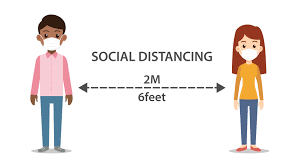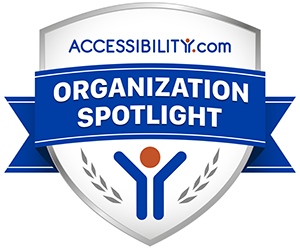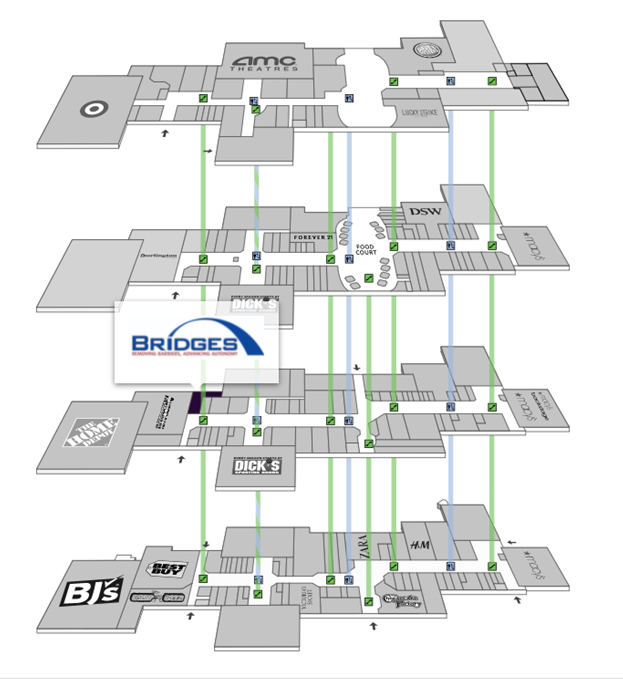
Mask Wearing Social Distancing
Systematically, people with disabilities have been put to the side with little to no consideration of their need for equal access. During this time of COVID-19, new guidelines on how we interact with one another have once again failed to take people with disabilities into account. Social distancing and mask-wearing have become the norm. This poses challenges for people who are deaf and hard of hearing as well as for people who are blind or visually impaired.
The effect of face masks is that they exclude people who are deaf and hard of hearing because it is impossible to read lips. The effects of social distancing exclude people who are blind or have low vision. People with low vision or blindness need to touch objects and surfaces more than other people. Some blind people need to hold another person’s arm for guiding.
For people who are both deaf and blind, the pandemic and social distancing bring unique challenges. For these individuals, communication and culture relies on touch to survive: hand-over-hand signing to communicate; fingers scanning Braille public signs for mobility; and hugs and handshakes to feel connected. The risk of infection has necessitated a new way of interacting that does not involve touching. One deaf-blind man reported “the requirement to stay 6 feet away from other people is actually not safe for me. As a blind person, I need to touch my guide.”
People with disabilities face additional challenges including difficulty in obtaining groceries and supplies. People with disabilities use online shopping due to mobility challenges involved with navigating while shopping in stores. Due to the current pandemic, it is difficult to get an online delivery slot. The process involves many more steps and is much slower. People with disabilities are not able to get deliveries of groceries and basic supplies when they need them; nor can they go to the store to get them. Furthermore, people with disabilities have higher rates of isolation and depression. Now, they are even more isolated due to restrictions on visiting people’s homes. People with disabilities need support! Their rights to accessibility must be protected. Alternative means of communication must be used so people with disabilities have access to supports and services.
The ADA (Americans with Disabilities Act) requires hospitals and long term care facilities to provide services that help deaf and hard of hearing people understand what is being said and are supposed to ask what services are needed. This can be in the form of in-person sign language interpreters, Video Remote Interpreting (VRI), lip-reading, written communications, hand-held amplification devices, captioning or CART, or speech-to-text apps.
Now, during the COVID-19 pandemic, most hospitals are seeing a large number of patients and often say they cannot provide the same services. Many hospitals will not allow in-person interpreters, family members, or visitors to come into the hospital. People may be alone for a long time when they are in the hospital. Most doctors and nurses in hospitals now wear masks and gloves and may talk to people from behind a window or curtain, making it harder to understand them. Like any human being, people with disabilities must be heard. Hospitals and healthcare providers must adhere to the ADA, even during this pandemic. For some practical suggestions, the National Association for the Deaf recommends the following tools. Healthcare providers must be willing and able to utilize these tools in order to meet each person’s needs:
- A person who is deaf, hard of hearing, or Deaf-Blind may have a card with the following details in order to assist in communication. Here is a sample:
My name is:
I am deaf/hard of hearing/deaf-blind.
I do not understand you with your mask on.
Here is my identification card/Driver’s License.
Please speak into my smartphone. I am using it to understand you.
Please respect my legal right to understand you and participate in my care by allowing me to use my smartphone.
If my smartphone is not working well or at all, please write down what you are telling me.
- With smartphones, people may use apps to communicate with you, for example;
- VRI apps and/or speech-to-text apps. Some of those apps are free. Here is a list of technology resources:
For People who Use Sign Language
For face-to-face communication, you may want to consider supplemental speech-to-text options for understanding hearing people. You also may want to consider options for typing text back as a backup option. Some tools can translate between different languages.
Video Interpreting
Linguabee is offering free video interpreting for COVID-19 testing
Speech to Text
Ava (can type back, many languages) (iOS, Android)
Google Live Transcribe (can type back, many languages) (Android)
Microsoft Translator (can type back, can translate, many languages) (iOS, Android, Windows)
Otter.ai (English only) (iOS, Android)
Web Captioner (many languages) (universal web page)
Typing Back
Sorenson Buzz Cards (iOS, Android)
For phone calls, you may want to consider having more than one video relay service (VRS) provider’s app on your phone, in case your provider of choice experiences technical difficulties. You also may want to consider text-based relay services if you can’t get a reliable internet connection.
Text-based fallback options for phone calls
Mobile TTY or real-time text (RTT) calling 711 (iOS, some Android)
For People who Speak, Listen and/or Lip-Read
With face-to-face communication tools, you may want to consider speech-to-text options for understanding hearing people. You also may want to consider options for typing text back, as an emergency back-up option, even if you feel comfortable speaking. Some tools can translate between different languages.
Speech to Text
Ava (can type back, many languages) (iOS, Android)
Google Live Transcribe (can type back, many languages) (Android)
Microsoft Translator (can type back, can translate, many languages) (iOS, Android, Windows)
Otter.ai (English only) (iOS, Android)
Web Captioner (many languages) (universal web page)
Typing Back
Sorenson Buzz Cards (iOS, Android)
For phone calls you may want to consider having more than one captioned telephone provider’s app on your phone, in case your provider of choice experiences technical difficulties.
Hamilton CapTel (Android 7 or older)
Sprint Web CapTel (universal web page)
Text-based fallback options for phone calls
Mobile TTY or real-time text (RTT) calling 711 (iOS, some Android)
For People who are Deaf-Blind
In addition to the tools above, Deaf-Blind people may want to load an application that can display text in large type.
Apple Notes (built in on iOS)
-
- People should test the apps at home before going to the hospital.
- When a person gets to the hospital, they may ask hospital staff for permission to use the WiFi (if available), and to put them in an area with strong WiFI.
- A person with a disability may ask hospital staff to communicate with them through their smartphone with VRI or speech-to-text apps.
- People with disabilities may ask hospital staff to write out communication, if they do not have a smartphone or device available for use.
- People with disabilities are resilient and in some cases will be prepared with an emergency bag with items that assist in communication. The emergency bag can include:
- Paper and pens or markers
- Plugs and chargers for your smartphone
- Tablets and/or laptops and chargers
- A cellular hotspot in case the hospital WiFi is not working
- An extension cord or power strip in case your bed is far from an outlet
- Extra eyewear supplies you might need, such as reading glasses to read the speech to text on a phone app
- Extra batteries for your hearing aid, cochlear implant, or assistive listening device
- A copy of your advance medical directive, if you have one.
- Emergency contact information for family members or friends
- For Deaf-Blind people, Braille device and charger and extra gloves for an interpreter to use
When and if a hospital or health care provider refuses to allow these methods of communication for access, people with disabilities have a right to request an “ethics consultation.” They may also contact the Deaf and Hard of Hearing Consumer Advocacy Network at ConsumerGroups@DHHCAN.org for help, and more locally, BRIDGES at info@bridgesrc.org.
People who are deaf and hard of hearing and deaf-blind people have a right to be heard and connected to other people. Hospitals and other healthcare providers must have a communication plan in place that includes technology and other trained methods in order to provide access to communication. People must be mindful during this time, when mask-wearing and social distancing reduce access for people with disabilities, to use whatever tools are available to ensure support and services are accessible for all people.




